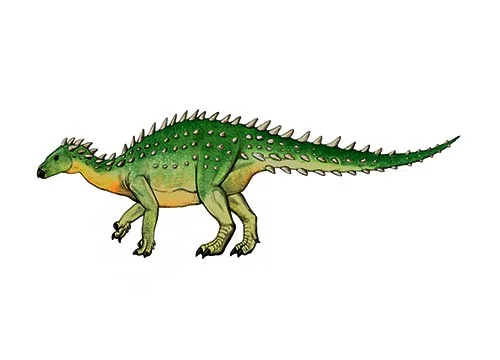Emausaurus (Ernst-Moritz-Arndt-Universität lizard)

Em-oe-sore-us
H. Haubold - 1990
Herbivore
Estimated 2.5 meters long
Armoured Dinosaur
E. ernsti (type)
Germany
Late Triassic, 210 million years ago
Emausaurus Facts
Emausaurus, meaning “Ernst-Moritz-Arndt-Universität lizard,” is a genus of small, herbivorous dinosaur that lived during the Late Triassic period, approximately 210 million years ago, in what is now Germany.
Emausaurus was a relatively small dinosaur, with a compact body, short legs, and a long tail. Its head was characterized by a beak-like snout, and its teeth were adapted for grinding plant material. Its overall body plan suggests that it was well-suited to living in dense forest environments, where it likely fed on low-growing plants.
The discovery of Emausaurus has provided important insights into the diversity and evolution of early ornithischian dinosaurs during the Late Triassic period, a time when many of the major groups of dinosaurs were first evolving and diversifying. Its physical characteristics suggest that it was a highly specialized and successful species, adapted to its environment and ecological niche.
Despite its importance, relatively few fossils of Emausaurus have been found, making it a relatively poorly known dinosaur. Nonetheless, it remains a fascinating and important species for scientists and dinosaur enthusiasts alike, offering important clues into the complex ecosystems and evolutionary processes of the Late Triassic period in Europe.



